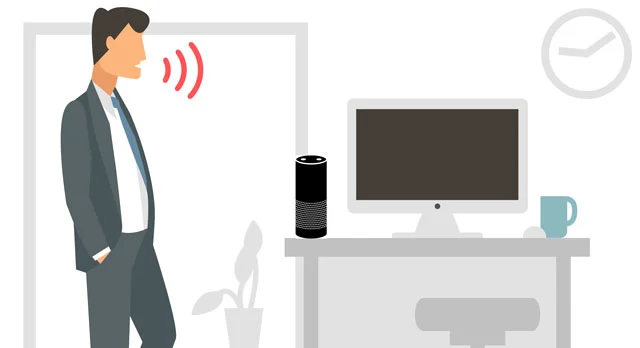What is Alexa?
Amazon Alexa, also known simply as Alexa, is a virtual assistant technology capable of voice interaction, music playback, making to-do lists, setting alarms, streaming podcasts, playing audiobooks, and providing weather, traffic, sports, and other real-time information, such as news. Alexa can also control several smart devices using itself as a home automation system. Users can extend the Alexa capabilities by installing “skills” (additional functionality developed by third-party vendors) such as weather programs and audio features. It uses automatic speech recognition, natural language processing, and other forms of weak AI to perform these tasks.


What is the Alexa Voice Service (AVS)?
While the Alexa service powers Amazon Echo devices, AVS brings that service to commercial device makers and allows them to integrate Alexa voice capabilities into their own connected products by using the Alexa Voice Service (AVS), a cloud-based service that provides APIs to interface with Alexa. Products built using AVS have access to Alexa’s growing list of capabilities including all the Alexa Skills. AVS provides cloud-based automatic speech recognition (ASR) and natural language understanding (NLU).

How can I work on Alexa? And which Alexa technology path is right for me?
There are multiple ways to create an Alexa built-in product that leverages the Alexa Voice Service. This section relates a few common product types to a suggested integration process, but each emerging product vertical has even more potential solutions.
- Speakers, sound bars, and AVRs
- Smart screens, TVs, and set-top boxes
- Smart Home and Device Templates
- Alexa Mobile Accessories (AMA)
- Alexa for Business devices (A4B)
- Alexa Skills Kit (ASK)
And we’ll be going further on Alexa Skills Kit for this blog.

What is the Alexa Skills Kit?
The Alexa Skills Kit (ASK) is a software development framework that enables you to create content, called skills. Skills are like apps for Alexa. With an interactive voice interface, Alexa gives users a hands-free way to interact with your skill. Users can use their voice to perform everyday tasks like checking the news, listening to music, or playing a game. Users can also use their voice to control cloud-connected devices. For example, users can ask Alexa to turn on lights or change the thermostat. Skills are available on Alexa-enabled devices, such as Amazon Echo and Amazon Fire TV, and on Alexa-enabled devices built by other manufacturers.
And, using this software development framework you can create your own skills or apps which can be used using Alexa.

Introduction to Alexa Skills
Amazon allows developers to build and publish skills for Alexa using the Alexa Skills Kit known as Alexa Skills. These third party-developed skills, once published, are available across Alexa-enabled devices. Users can enable these skills using the Alexa app. Most skills run code almost entirely in the cloud, using Amazon’s AWS Lambda service.


In this blog, you can get a brief how-to work on an Alexa skill and requirements you’ll need to build one.
Requirements-
You’ll need an Amazon Developer Account, AWS Account, AWS CLI, AWS Lambda Service, Programming knowledge (Preferred knowledge of Node.js, Java, Python, C#, Go, Ruby or PowerShell if using on AWS Lambda service, or any other programming language if you are hosting as a web service.)
Steps to Build a Custom Skill-

Step 1: Plan and Design Your Skill
This step helps in planning and designing your skill from scratch to understand the value your skill will provide to users and how to enhance the user experience.
Step 2: Set Up the Skill in the Developer Console
It will help you to set up a model in the developer console to start working on your new skill.
Step 3: Use the Voice Design to Build Your Interaction Model
This interaction model will help you to refer to your collections of intents, sample utterances and the dialog. It will help you to use the voice design accordingly.
Step 4: Write and Test the Code for Your Skill
For the coding task, you will need to create a service that can accept requests from the Alexa service and send back responses. You’ll be using an AWS Lambda function to host the service for your skill.
Then you can write the code for your skill, based on what type of service you are looking to work on. If you are using Lambda, you can code in Node.js, Java, Python, c#, Go, Ruby, or PowerShell. Or if you are hosting as a web service, you can use any programming language.
Step 5: Beta Test Your Skill
You can now test your skill using the Alexa simulator or an Alexa-enabled device, and then if required you have an option of setting up a beta test for your skill.
Step 6: Submit Your Skill for Certification
And when you are ready to make your skill public, submit it for certification. You will need to run validation and functional tests to help you identify issues that need to be addressed. Then you can review the submission checklist and can submit for certification.
Your Skill is Published, Now What?
Once your skill is certified, it will be published, Amazon customers can see it in the Alexa App and choose to enable and use it.

This blog covered an Introduction to Amazon Alexa Service, giving the reader an idea of what Alexa is and how it works. It briefly discusses how the user can develop their own skill for Alexa, providing them with an idea of the requirements and a follow-up chart of the steps. It gives the reader an idea of the general outline of the process and how it can be started, which should help readers to learn more about the process and start their adventure towards the world of developing skills/apps for Alexa for their personal and public user’s use.
Thank you for reading, Have a great time! 🙂